

Photo by Mary Kilberg. Jupiter makes the bright trail at center, with Saturn and Aldebaran to the right (Saturn higher and brighter).
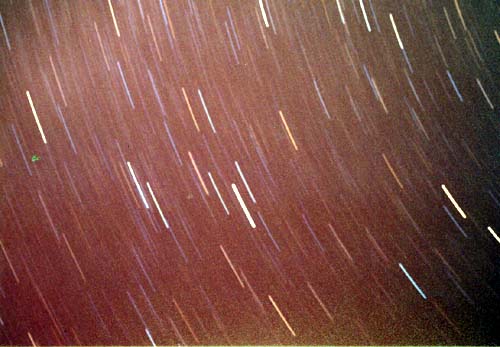
Photo by Sylvia Faust, 9/17/00 from her back yard in Parkview. This is a 20-minute exposure, with a telephoto lens and 800 speed film.

Note the varying colors of the stars in this 2.5 hour time exposure. The photo was taken by Erin Land, Brad Venema, and Scott Hardison 10/23/98 at Elk River Junction 10 miles north of Clinton, IA. The shutter was left open from 10 p.m. to 12:30 a.m. The background lights are from Sabula, IA, Savanna, IL, and a possible passing Mississippi barge. A 35mm camera with 800-speed film was used. The camera was placed in a cornfield, pointing northeast. Along the way to this successful photo, the students solved several problems: a dead camera battery, how to keep the trigger pressed down without holding on to the camera, and finding a non-cloudy night.
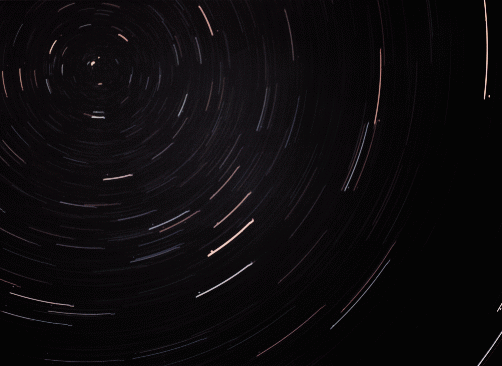
Photo taken by Emily Doyle, spring 1999, from her house outside the city with 1000-speed film. Polaris is easy to find the photo because it is almost stationary during the 1.0-hour exposure time. How many degrees does the sky rotate in one hour? 1/24 time 360 = 15 degrees. Put a protractor on the screen to check this!
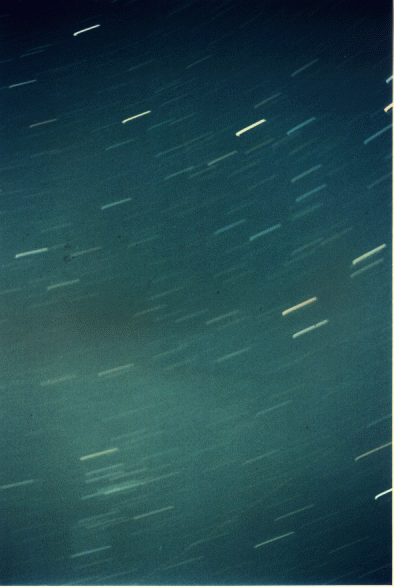
Photo taken by Karen Stoll, Tara Day, Liz Meyer, and Ferndanda Pacurucu, March 1999, at Menke Observatory during a field trip. This is the best of several frames that were taken that night. The film was 800-speed. This view is also to the north; note that the star trails are shorter toward the top of the picture.
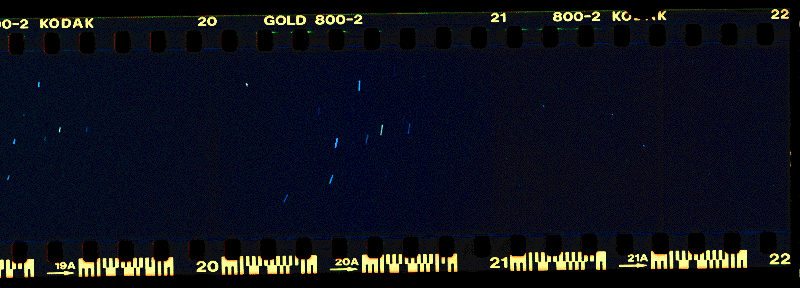

1999 September 2 images (that were rejected by the photofinisher as being
unexposed).
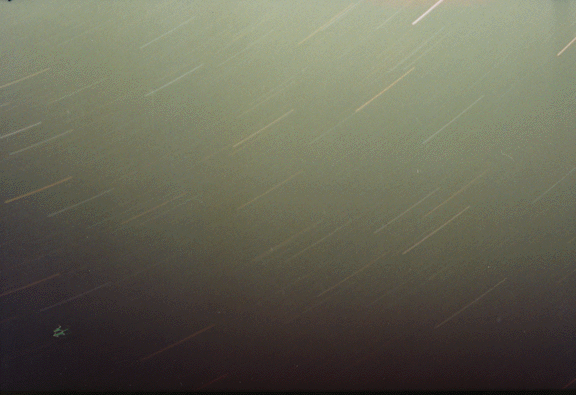
By Shellee Frazee, 1999 Nov.